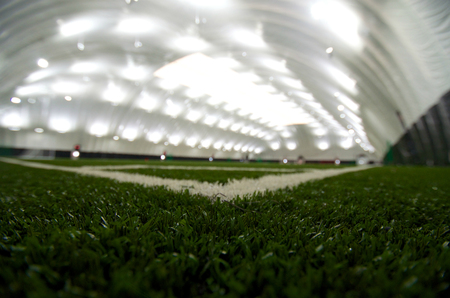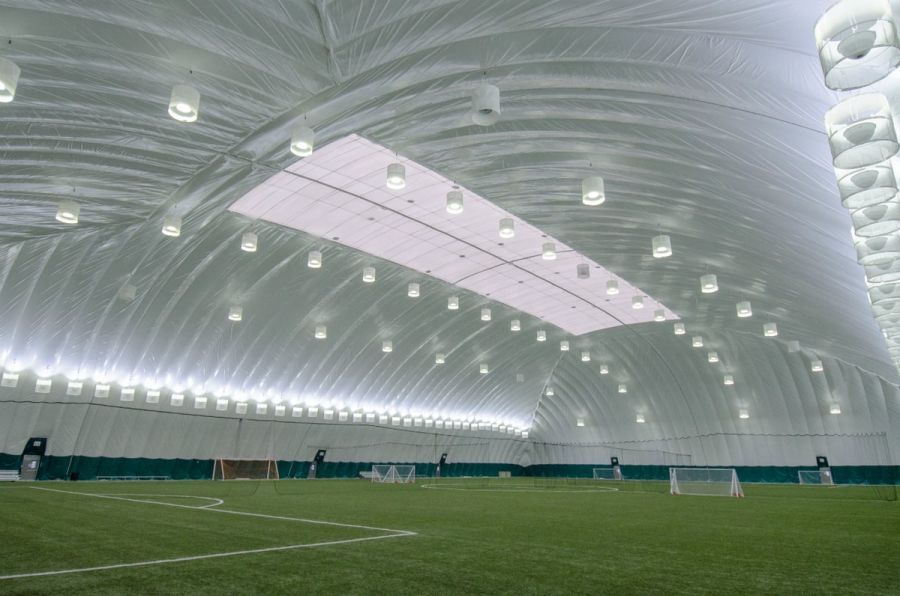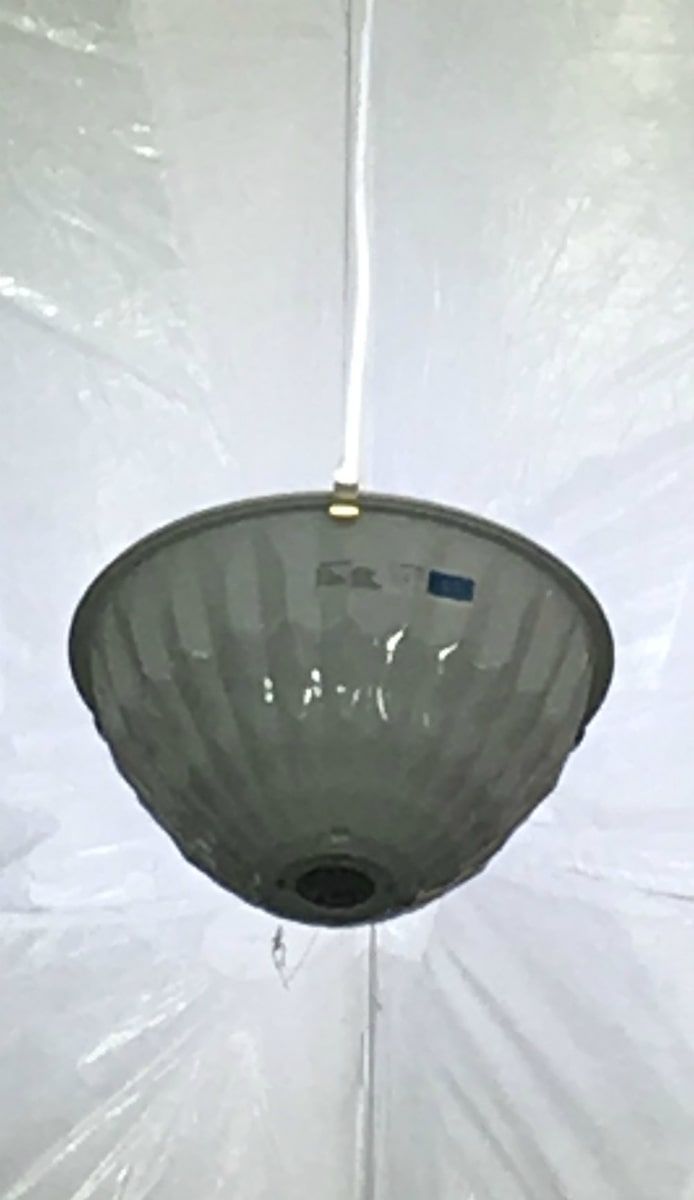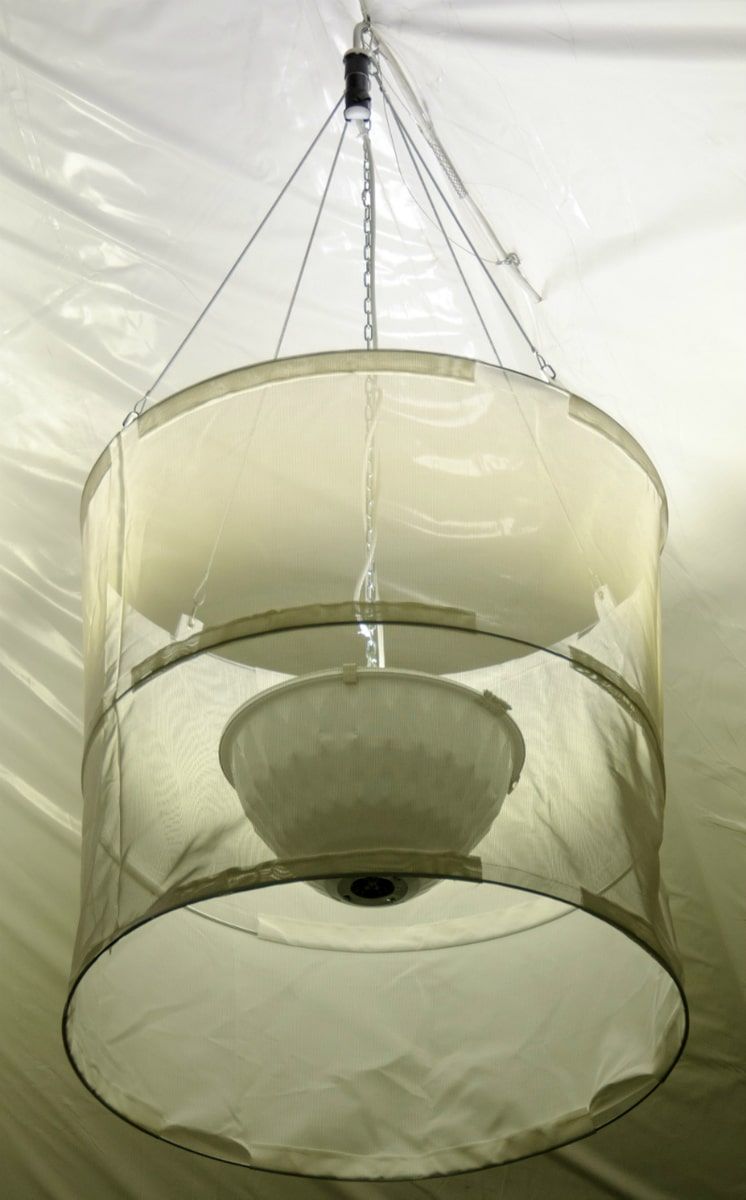
We collect basic website visitor information on this website and store it in cookies. We also utilize Google Analytics to track page view information to assist us in improving our website.
The great thing about domes is that they help reduce energy and carbon footprints. Bubbles do this by reducing the materials needed for an indoor facility, and making maximum use of available space. Another way that air structures help the environment is with LED lights.
We’ve talked about LED lights before, including why they haven’t seen much use until now, and why they seem to be popping up everywhere now, but today we’re taking a step back, putting back on our science hats, and looking at how LED lights work.
To begin to understand LEDs, we should go back to basics and look at how electricity works. Electricity is movement of energy. When a charge exists, it means that there is more energy in one area than there is in another. If given the opportunity, this charge will flow in the direction of least resistance.
You can think of it in the same way you think of water. If you have a bucket of water and pour it on the ground, it will flow in the direction of gravity, taking the path of least resistance. Water will flow in, or create, a groove that demonstrates this path of least resistance.
Electricity is much the same and flows from a high-energy area to a low energy area in the simplest path. When electric current is able to flow well through something, that material is known as a conductor. If a material stops the flow of electricity, it is an insulator. Simple, right?
Well there also exists another type of material that isn’t quite a conductor and isn’t quite an insulator. A material can appear to be an insulator until the current increases to such a point where it becomes a conductor. Materials that have a tipping point like this are called semi-conductors.
LEDs are made using a special semi-conductor materials called p-type and n-type silicon.
Using this principle of semiconductors, the two types of silicon can be combined to create what is called a junction diode. Simply put, a semiconductor diode allows conduction in one way and when the current reaches a certain point, the electrons activate a release of energy.
What’s unique about LEDs is that this release of energy is pretty much only in the form of photons, or light. This means that no energy is lost as heat, sound, or movement.
Makes sense? If not, here’s a pretty good link that explains it in a bit more detail.
As far as dome owners need to know, LED lights are bright and use up much less electricity than typical lights. While domes are naturally relatively easy to light up because of the shape and white colour of the inside walls, sports like soccer and ultimate Frisbee need lots of light. The closer we can get to the brightness of the outdoors during the day, the better it is for athletes to focus on their sport.
That’s why LEDs are the only way to go. By being brighter, lighter, and smaller than other types of lights, it’s possible to light up your dome as much as possible, without spending more money.
Pretty much every indoor sport facility has some form of artificial turf. There’s nothing like playing soccer or lacrosse on the real thing, but newer turf technologies make it possible to get pretty close. Last week we looked at how turf is made, but that’s only half of the story to getting fake grass that simulates the feeling of the real thing. The other half is in the installation.
 You might be thinking that it’s a relatively straightforward process for laying turf, but there is an art and technique to it which means you’re best bet is to hire professional installers to create your indoor turf space.
You might be thinking that it’s a relatively straightforward process for laying turf, but there is an art and technique to it which means you’re best bet is to hire professional installers to create your indoor turf space.
The first step for any turf install is planning. Just like any other large project, planning is crucial. To make most efficient use of time and materials, the entire area needs to be mapped and measured. Once you have a blueprint for the area, work is ready to begin.
The next step is to prepare the surface. Synthetic turf usually replaces growing grass, so first the layer of grass needs to be cut off. The top layer of soil is then dug down a little to remove as much plant material as possible, then a weed suppressing membrane is laid down.
On top of the membrane, it’s time to build the surface back up, starting with a layer of crushed rock. The crushed rock provides a solid base that still allows water to percolate down. On top of the rock goes a layer of soil or sand which is then levelled to create a nice flat surface. Sandwiched on top then goes a shock absorbent material, important for play surfaces where players will be running—or perhaps falling.
Now we get to actually laying down the turf. It’s a simple process when the turf is laying out straight, the tricky part is when you hit an obstacle and an irregular cut is needed. This might be at a goal post, a curved wall, or maybe a line marker. Carefully cutting away the excess needs a steady, practiced hand!
Once the turf is laid out, it needs to be fastened into place using nails or spikes. It’s important to make sure the top of each nail is hidden deep within the grass.
Finally, silica sand is sprinkled directly on top of the turf then swept in to let it settle deep within the grass. You’ll never see this sand, but it acts to weigh down the turf and secure it in place.
After this, the turf is ready to be played on! Of course, soccer or football fields will still need lines painted to be ready for gameplay. The turf surface, though, should feel pretty close to the real thing. Of course, it won’t be exactly like an actual grass surface but the benefits of being able to play indoors during the winter as well as the reduced maintenance quickly outweighs the slight change. If you’d like to learn more about artificial turf surfaces in indoor sport domes, don’t hesitate to contact us to ask!
Feeling chilly? It’s that time of year again when the mercury drops to points that you’d forgotten existed, and you do your best to stay in the warm indoors for as long as possible. Air domes, like any indoor facility, are best when they offer a nice warm environment to play in.
Raising the temperature is easy enough with the use of heaters, but keeping the heat in is another matter. Air domes lacks something that many structures take for granted: thick heavy walls. While they do take a long time to build, thick brick and concrete walls do have the advantage over fabric walls when it comes to keeping in the heat.
Luckily, there is a solution for air domes. Insulation. No, not that fluffy pink stuff you put in the walls of your house—air dome insulation is a bit more unique. Air dome insulation needs to be light enough that it can be held up with the force of air that holds up the walls and thin enough that it will fit in between the layers of fabric that make up the dome walls.
So what can we use to insulate a bubble for the winter?
To solve the unique needs of insulating an air dome, The Farley Group uses something called double layer reflective insulation. Manufactured by a company called rFOIL, the reflective insulation is light, thin, and significantly reduces the energy needs required to heat an area as large as that of an air dome sports facility.
rFoil Reflective Insulation appears simple enough. It’s made up of two layers of polyethylene bubbles, sandwiched between two layers of aluminum.
It works by reducing the amount of radiant heat transfer. The reflective aluminum surface essentially bounces the heat back into the dome. For a description of radiant heat, have a look at an older blog that we wrote that explains the science behind radiant heat transfer.
Other key benefits of rFOIL Reflective insulation, besides it’s insulation value, are:
- It is unaffected by moisture. Condensation that forms on the surface is controlled and doesn’t weigh down the sheets or grow mold
- It serves as a radiant barrier, as well as a vaper barrier. One product to do it all.
- It’s available in different formats for multiple different uses.
Pretty cool stuff.
You might be wondering, “Well that’s awesome for domes, but what else can reflective insulation do?” The answer is, plenty! Other uses for rFOIL’s product include: crawlspaces, basement insulation, residential insulation, and cathedral ceilings. Anywhere that a light, moisture resistant, easy-to-use insulation solution is needed, it may be a good fit.
To learn more about insulating your air supported dome, or for more info on reflective insulation, call The Farley Group! We’re ready to help keep the cold out of your dome.
Have you ever wondered how artificial turf is made? Artificial turf fields are popping up across the country because the technology has gotten to the point where artificial turf is pretty close to the real thing.
Artificial grass also makes it super easy to turn an outdoor field into an indoor field for the winter. Many soccer domes are put away in the spring, then re-inflate in the fall and this wouldn’t be possible if the turf was living, breathing, photosynthesizing grass.
Artificial turf has been around for a while and it has come a long way since it’s humble beginnings. Making turf is actually a relatively straightforward process, while also being a very specialized procedure.
There was actually an episode of “How It’s Made,” that demonstrated the process of fabricating turf, so if you want to see it in action, check out this clip.
Turf has two basic components, the strands of “grass” and the fabric backing to which the strands are attached to. Obvious, right? But making fake grass that feels and reacts the same as the real thing is the real trick.
Plastic Blades of Grass
We all know what real grass feels like, so it’s pretty hard to fool anyone into thinking artificial blades of grass are even close to the real thing. This doesn’t mean it’s impossible to create artificial grass that won’t fool someone for a minute into thinking they are walking on living grass.
It all starts with the individual strands. Starting with high quality white plastic pellets, the plastic is melted and coloured green. The plastic is then extruded into long strands of grass. The strands are stretched (which strengthens them), then spooled together and formed into a yarn. Once this yarn is ready, it’s ready to move on to the next step.
Pulling Synthetic Turf Together
Starting with a large sheet of fabric, the plastic grass yarn is pulled through using a large, automatic sewing machine. Once the yarn is looped through the sheet, another machine slices the ends of each loop. This releases all the individual strands in the yarn, as well as creates a realistic tip on each blade of grass.
An adhesive is applied to the back of the fabric to hold the strands in place, as well to add strength to the entire sheet. A bit more processing increases the strength of the sheet, as well as provides water permeability. To simulate real grass it needs to be able to withstand heavy feet, as well as the elements.
Once the sheets of grass are ready, they’re rolled up and shipped off to sport fields, ready to be applied by synthetic turf professionals. There is a science and methodology to installing turf to make it feel as close to the real thing as possible, but we’ll get into that in another blog.
Air dome sport facilities couldn’t exist without synthetic turf that can simulate the real thing. Thanks to both, indoor sport is more viable than ever! If you’d like to learn more about turf in your upcoming air structure project, just ask and we’re able to point you in the right direction.
Over the past few years, you’ve likely noticed that many things from cars, to flashlights, to home lighting have switched to using LED lights. You may have even noticed that many of our newest dome projects are using LED lighting systems. We’re even retrofitting older bubbles with LEDs. But why are you seeing LED lights everywhere nowadays?
The world relied on incandescent lighting for many years, but technologies change over time and we now have something better. The light emitting diode (or LED) format offers a more efficient and effective type of lighting. Initially quite expensive, the technology has come down considerably in price and has largely replaced its outdated predecessor. Incandescent bulbs typically waste 80-90% of their energy as heat, rather than light. The other game in town, Contact Fluorescent Lamps, also doesn’t measure up, wasting as much as 80%.
While some products that promise improvements fail to deliver (remember New Coke?), LED has only grown in popularity because consumers and businesses see the obvious improvements. Using about 75% less energy than the competition, LED makes good financial sense but also offers other appealing features.
LED offers a number of options that help you attain the sort of lighting that both compliments your home and provides comfortable illumination for your family. You can choose from various colour temperatures that provide different types of light, including soft and warm, neutral, or cool white.
LEDs are also more stylish, which makes planning your living space more satisfying. You can even buy LED lights already integrated into the fixture, greatly increasing your design choices. That certainly beats a plain, old-fashioned light fixture hung from the ceiling.
Incandescent bulbs were standard on cars for years, but LED is gaining in popularity, and for good reason. LED lights tend to be brighter and have a faster response time. This is especially important when you are braking. A fraction of a second may not seem like much, but it can be the difference between a safe stop and an accident. As LED draws less current than incandescent, they also put less strain on the turn signal system. LED also has a longer lifespan, which saves you money in the end. The recently introduced LED Plasma lights are even brighter.
You can also install LED lights in different colors in your front grill or on the underbody of the vehicle (known as underglow), to very cool effect!
Metal halide lights are much slower than LED. Getting metal halide lights going again after a power failure often requires a wait of at least ten minutes. Can you imagine having to stop a football game where one team is on a roll and attempting a comeback? Their momentum could be completely lost by the time the lights are back on. This is not a problem for LED, which fire up instantly.
This aspect of LED not only benefits the players, but also allows stadiums to offer more elaborate and entertaining light shows during halftime. Not to mention the reduced energy cost of LED also makes such displays more affordable. LEDs are also much lower maintenance—a big deal for domes where the lights can be hard to reach!
 |
 |
 |
